
How to Use MPRS Pressure Sensor: Examples, Pinouts, and Specs
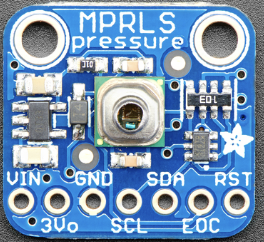
 Design with MPRS Pressure Sensor in Cirkit Designer
Design with MPRS Pressure Sensor in Cirkit DesignerIntroduction
The MPRS Pressure Sensor is a device designed to measure the pressure of gases or liquids. It operates by converting physical pressure into an electrical signal, enabling precise monitoring and control in a wide range of applications. This sensor is widely used in HVAC systems, automotive systems, industrial processes, and other environments where accurate pressure measurement is critical.
Explore Projects Built with MPRS Pressure Sensor
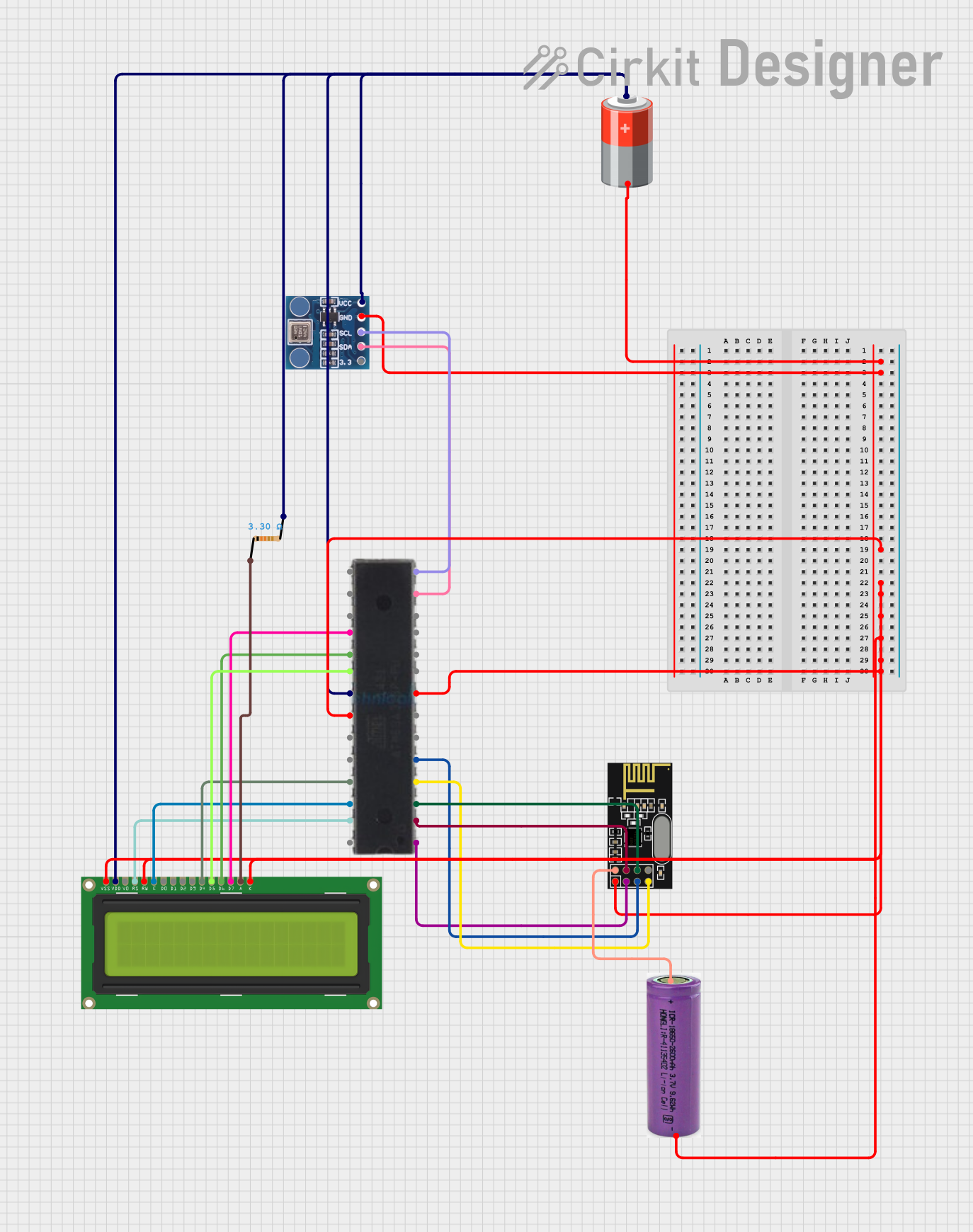
 Open Project in Cirkit Designer
Open Project in Cirkit Designer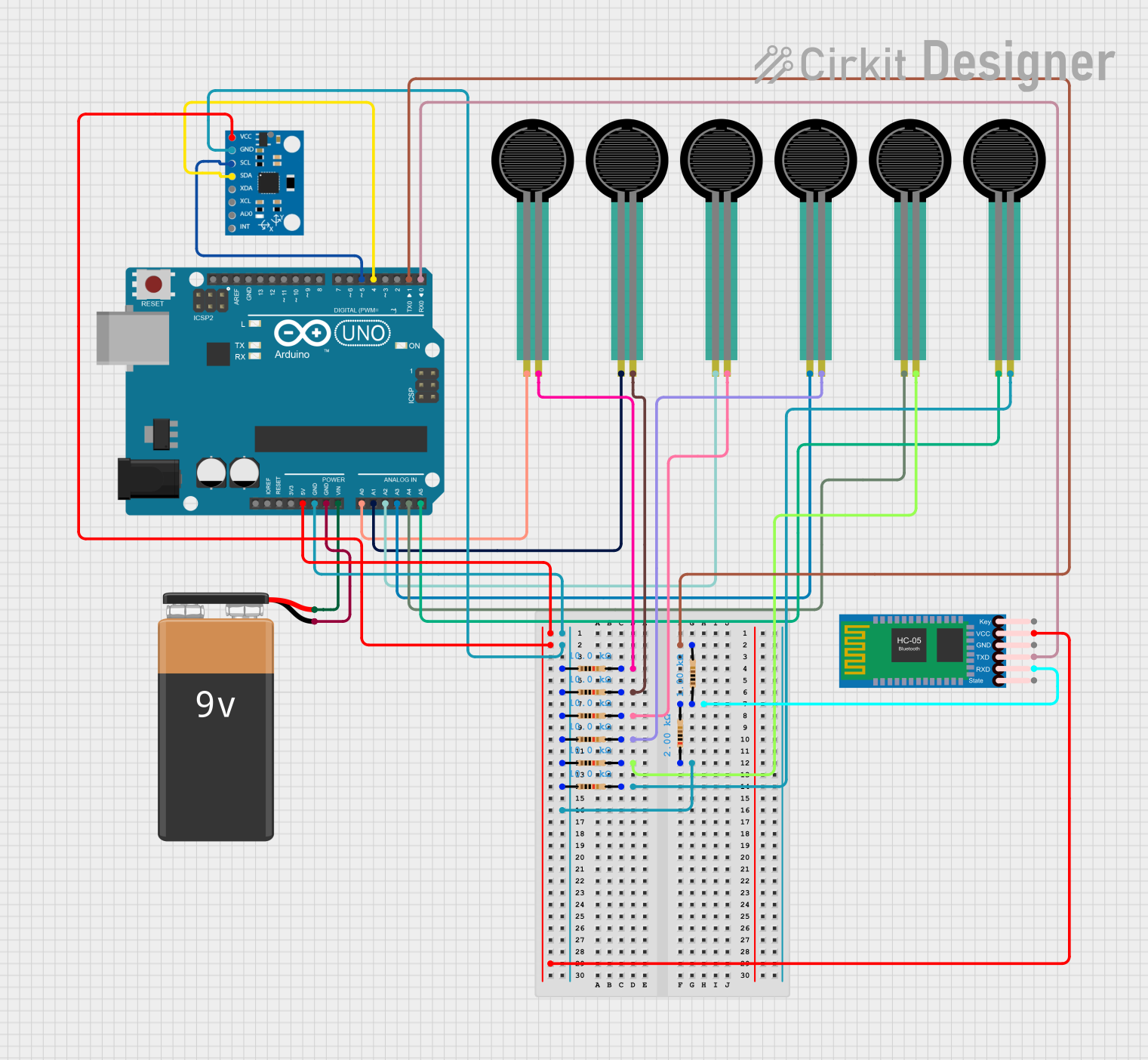
 Open Project in Cirkit Designer
Open Project in Cirkit Designer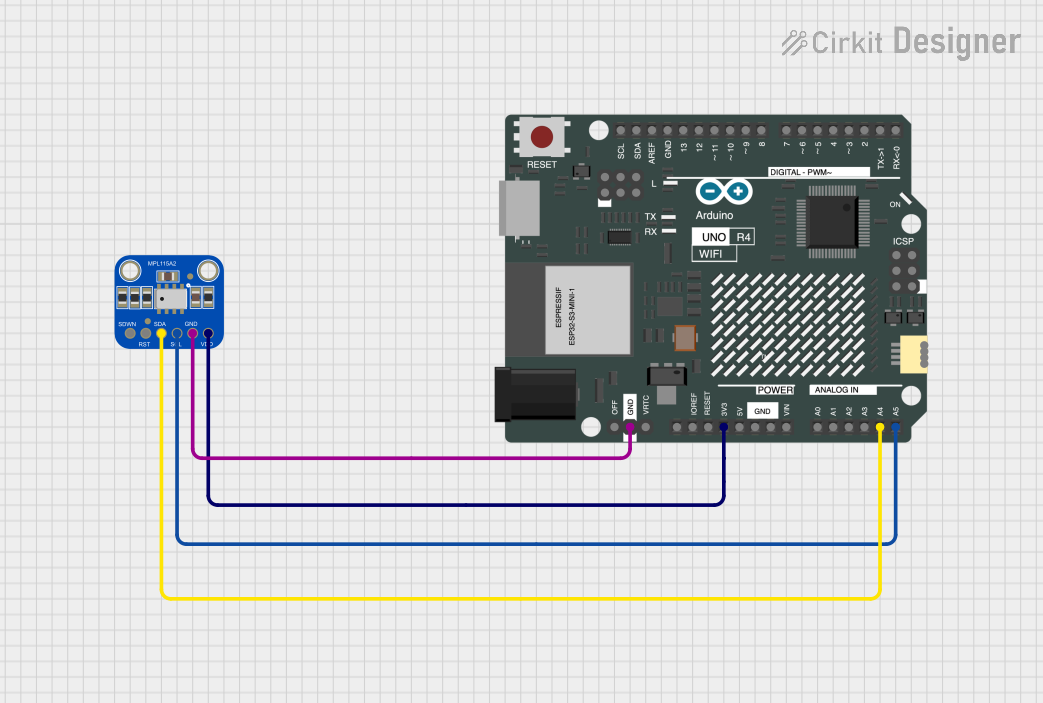
 Open Project in Cirkit Designer
Open Project in Cirkit Designer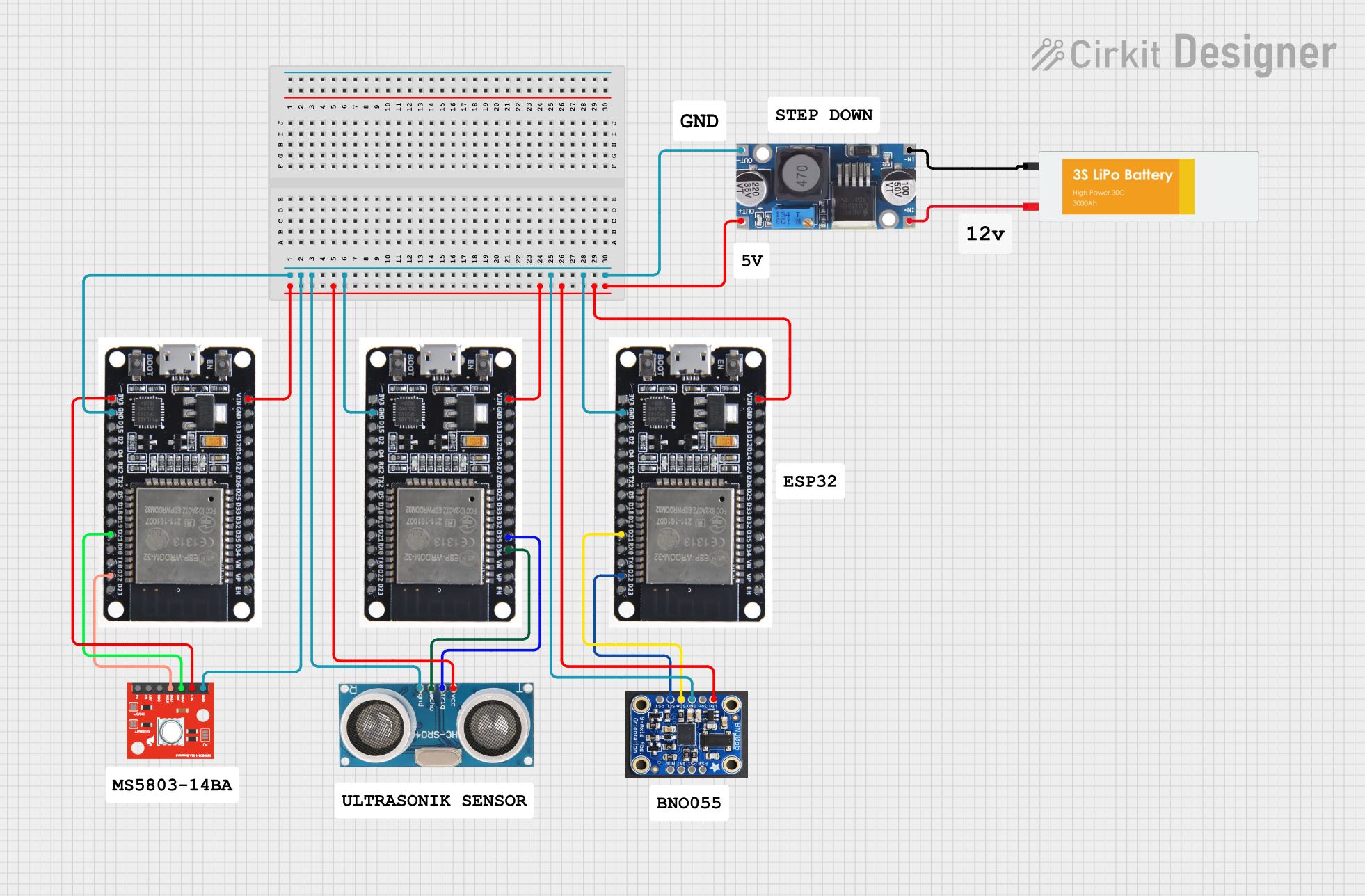
 Open Project in Cirkit Designer
Open Project in Cirkit DesignerExplore Projects Built with MPRS Pressure Sensor

 Open Project in Cirkit Designer
Open Project in Cirkit Designer
 Open Project in Cirkit Designer
Open Project in Cirkit Designer
 Open Project in Cirkit Designer
Open Project in Cirkit Designer
 Open Project in Cirkit Designer
Open Project in Cirkit DesignerCommon Applications:
- HVAC (Heating, Ventilation, and Air Conditioning) systems for monitoring air pressure.
- Automotive systems for engine and tire pressure monitoring.
- Industrial processes for fluid and gas pressure control.
- Medical devices such as ventilators and oxygen concentrators.
- Environmental monitoring systems.
Technical Specifications
The MPRS Pressure Sensor is available in various models, each tailored for specific pressure ranges and applications. Below are the general technical specifications:
| Parameter | Value |
|---|---|
| Pressure Range | 0 to 100 PSI (varies by model) |
| Supply Voltage | 3.3V to 5V DC |
| Output Signal | Analog voltage (0.5V to 4.5V) |
| Accuracy | ±1% of full-scale output |
| Operating Temperature | -20°C to +85°C |
| Response Time | < 1 ms |
| Pressure Type | Gauge or Absolute (depending on model) |
| Sensor Type | MEMS-based |
Pin Configuration and Descriptions
The MPRS Pressure Sensor typically comes with a 3-pin or 4-pin interface. Below is the pinout for the 3-pin version:
| Pin Number | Pin Name | Description |
|---|---|---|
| 1 | VCC | Power supply input (3.3V to 5V DC) |
| 2 | GND | Ground connection |
| 3 | OUT | Analog output signal (pressure data) |
For the 4-pin version, an additional pin may be included for digital communication or calibration purposes. Refer to the specific datasheet for details.
Usage Instructions
How to Use the MPRS Pressure Sensor in a Circuit
- Power the Sensor: Connect the VCC pin to a 3.3V or 5V DC power supply and the GND pin to the ground of your circuit.
- Read the Output Signal: The OUT pin provides an analog voltage proportional to the measured pressure. This signal can be read using an ADC (Analog-to-Digital Converter) on a microcontroller, such as an Arduino.
- Calibrate the Sensor: If required, calibrate the sensor to ensure accurate readings. This may involve adjusting for zero-offset or scaling the output.
Important Considerations and Best Practices
- Power Supply: Ensure a stable and noise-free power supply to avoid inaccuracies in the output signal.
- Pressure Range: Do not exceed the specified pressure range to prevent damage to the sensor.
- Mounting: Install the sensor in a location free from excessive vibration or mechanical stress.
- Temperature Effects: Be aware of temperature variations, as they may slightly affect the sensor's accuracy.
- Filtering: Use a low-pass filter on the output signal if noise is present in the readings.
Example: Connecting the MPRS Pressure Sensor to an Arduino UNO
Below is an example of how to connect and read data from the MPRS Pressure Sensor using an Arduino UNO:
Circuit Connections:
- VCC: Connect to the 5V pin on the Arduino.
- GND: Connect to the GND pin on the Arduino.
- OUT: Connect to an analog input pin (e.g., A0) on the Arduino.
Arduino Code:
// MPRS Pressure Sensor Example Code
// Reads the analog output from the sensor and converts it to pressure (PSI).
const int sensorPin = A0; // Analog pin connected to the sensor's OUT pin
const float sensorMin = 0.5; // Minimum output voltage of the sensor (in volts)
const float sensorMax = 4.5; // Maximum output voltage of the sensor (in volts)
const float pressureMax = 100.0; // Maximum pressure the sensor can measure (in PSI)
void setup() {
Serial.begin(9600); // Initialize serial communication
}
void loop() {
int sensorValue = analogRead(sensorPin); // Read the analog value (0-1023)
float voltage = sensorValue * (5.0 / 1023.0); // Convert to voltage (0-5V)
// Map the voltage to pressure (PSI)
float pressure = (voltage - sensorMin) * (pressureMax / (sensorMax - sensorMin));
// Print the pressure value to the Serial Monitor
Serial.print("Pressure: ");
Serial.print(pressure);
Serial.println(" PSI");
delay(500); // Wait for 500ms before the next reading
}
Troubleshooting and FAQs
Common Issues and Solutions
No Output Signal:
- Cause: Incorrect wiring or insufficient power supply.
- Solution: Double-check the connections and ensure the power supply voltage is within the specified range.
Inaccurate Readings:
- Cause: Sensor not calibrated or external noise affecting the signal.
- Solution: Calibrate the sensor and use a low-pass filter to reduce noise.
Output Signal Stuck at Maximum or Minimum:
- Cause: Pressure exceeds the sensor's range or the sensor is damaged.
- Solution: Ensure the pressure is within the specified range. Replace the sensor if damaged.
Fluctuating Readings:
- Cause: Unstable power supply or environmental interference.
- Solution: Use a regulated power supply and shield the sensor from external interference.
FAQs
Q1: Can the MPRS Pressure Sensor measure vacuum pressure?
A1: Yes, if the sensor is designed for gauge pressure, it can measure vacuum pressure as negative values relative to atmospheric pressure.
Q2: Is the sensor waterproof?
A2: The sensor is typically designed for use with liquids and gases, but ensure it is properly sealed and rated for your specific application.
Q3: Can I use the sensor with a 3.3V microcontroller?
A3: Yes, the sensor operates with a supply voltage of 3.3V to 5V, making it compatible with 3.3V systems.
Q4: How do I extend the sensor's lifespan?
A4: Avoid exposing the sensor to pressures beyond its rated range, and protect it from extreme temperatures and corrosive substances.